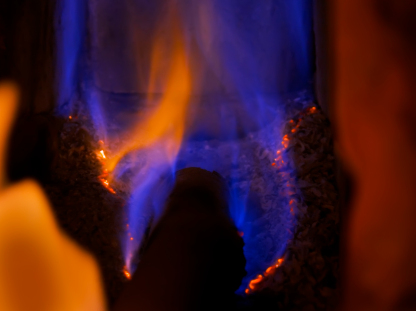What to Do If You Have a Gas Leak
Gas is mainly used for household heating. Despite being considered as non-intrusive by most, it can be unsafe. This makes your home a possible hazard if the gas ever manages to seep. A gas leak most commonly occurs as a result of a damaged gas application in your home.
If you think you may have a gas leak or if you can smell gas then call the gas standby line as soon as possible. Allow the gas to outflow by opening all gaps and entrances. If you know how, switch off the gas at the mains. You shouldn’t touch anything else. An explosion can occur due to a spark from a switch appliance or even from a light switching on or off. Gas will blow up as soon as it comes into contact with fire. Therefore, the worst thing you can do is to light a match, open a bare flame or light a cigarette.
Don’t touch the application that is seeping gas. Even if it looks easy to repair, you may cause further disturbance to the leakage.

Loss of Gas Supply
Some work on the gas supply is vital. If your gas source is to be disturbed, you should receive an advanced notice from the gas engineers. However, no cuts will be made to your gas source over peak times. Disruptions will always be kept to a minimum.
Gas engineers may need to interrupt your gas services, due to; restraints on the system capacity and strain on the structure. You will not be informed of disturbances to your gas supply if there is an emergency. However, in all other situations you will be informed. The gas source will also be restored as quickly as possible. If gas engineers do not meet these standards then you can claim reimbursement from your gas provider.
How to Prevent Carbon Monoxide Poisoning
Having your applications frequently checked by a Gas Safety Registered engineer is the best way to stop carbon monoxide poisoning. Death can occur as a result of carbon monoxide poisoning; however brain injuries are more common. Poorly maintained gas applications are the main cause of carbon monoxide poisoning in the UK.
If you live in leased accommodations, your landlord has a legal requirement to make sure all gas applications are in operational order.
Carbon monoxide’s existence can be detected, although it can never be seen, smelt, tasted or touched.
Signs that carbon monoxide is present in your home are:
- A cream/ginger gas flare instead of blue
- Shaded brown marked parts on gas applications
- Signs of burns
- Gaps condensing more often than usual
A carbon monoxide alarm can detect its presence in your home. The alarm will change colour or make a noise to alert you. However, before buying an alarm you should make sure that it has been approved by an official organization. Your native DIY store should stock a range of carbon monoxide alarms. The batteries must be verified monthly and altered when needed. The business will similarly recommend exactly how often you should change your device.
If the alarm detects that carbon monoxide is present in your home you should abandon your household straight away.
There is a high chance that there is carbon monoxide present in your home if everyone in your home is experiencing flu-like symptoms and they improve when they’re away from the home. Signs that you are suffering from carbon monoxide poisoning include; headaches, drowsiness, feeling weak, sickness, abdominal pains, chest pains and irregular actions.





